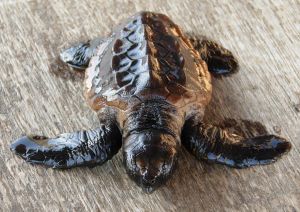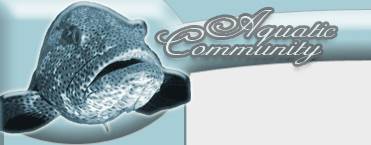Sea turtles

Sea turtles are turtles that live virtually their entire life in the ocean. Once they hatch and reach the sea, they only return to land to lay their eggs. Males never return to land once they made their way to the waters edge as baby turtles.
There are a total of seven turtle species in the world. There used to be eight recognized species but DNA studies have shown that the Green turtle and the East pacific black turtle is in fact the same species, bringing the total number down to seven. The seven species are Flatback sea turtle, Green sea turtle, Hawksbill sea turtle, Kemp's Ridley sea turtle, Leatherback sea turtle, Loggerhead sea turtle, and Olive Ridley sea turtle.
Six of the species belong to the family Cheloniidae, the exception being the leatherback turtle which belongs to the family Dermochelyidae. The family Dermochelyidae consists of only this species. The Leatherback is also the only species of sea turtle who hasn’t got a hard shell. Instead, tt has bone plates under the leathery skin that gives the species its common name.
Sea turtles are believed to have an expected life span of 80 years or more. Some species need 30 years to mature before they return to the beaches to lay eggs of their own.
The largest species of sea turtle is the leatherback sea turtle (Dermochelys coriacea). It can grow to be 7 ft in length (2 m) and 5 ft (1.5 m) wide, and can weigh up to 1,300 pounds (650 kg). The other species of sea turtle are smaller and their bodies are more narrow.
Sea turtles are found in all the world’s oceans except the Arctic Ocean and spend most of their time below the surface. They do however need to surface for air, with different species surfacing at a different frequency. The Green turtle can for instance be active under water for 4-5 minutes after which it needs to surface for air. It only has to stay at the surface for 1-3 seconds before it can dive and stay down for 4-5 minutes again. The low surface time is due to the fact that the lungs have developed to allow rapid exchange of air, including oxygen. Sea turtles can stay under water for much longer periods when they are not active and can rest on the ocean floor for several hours without needing to surface. Stress also affects how long they can go without having to surface to breathe and this is why they quickly drown when caught in fishing nets and fishing trawls.
Sea turtles eat a lot of salty food such as jellyfish and have salt excretory glands to get rid of the extra salt. These glands are located in the corner of their eyes on leatherback turtles and in the nostril in the other species.
Sea turtles use the Earth’s magnetic field to navigate and return to lay their eggs on the same beach on which they were born. Mature female turtles return to lay their eggs every 2-4 years. They can lay eggs up to eight times during the years they do return; each time laying 150-200 eggs in a pit it dug in the sand. Once the eggs have been deposited, the mother will cover the pit with sand.
The eggs hatch after two months and the young have to try and make it to the sea on their own; a perilous journey that often ends in the mouth of a predator. For those who do make it, the risk of getting eaten once they enter the ocean is also high. Only about 0.01% survives to adulthood. Most species of sea turtle lay eggs during the night but Kemp's Ridley sea turtle lay eggs during the day. This habit has made it particularly sensitive towards human egg poaching and the species is critically endangered.
Human activity is causing serious problems for all the other species as well and all sea turtles are today listed as threatened or endangered. (The Flatback sea turtle is currently not listed since more data is needed before a scientific assessment can be made.) Loggerhead turtle is considered a threatened species, while the Olive Ridley’s sea turtle and the Green sea turtle is considered endangered. The situation is even bleaker for the Leatherback, the Hawksbill and the abovementioned Kemp´s ridley sea turtle – all three species are considered critically endangered.
Sea turtles used to be hunted for their meat, fat and shells. The main treat today is however the fact that they are caught as by catch in commercial fishing. There are easy ways to help prevent this and new methods have been developed to reducing by-catches. Such methods include using larger hooks and make turtle gates in trawls. Turtle Excluder Devices (TEDS) can reduce sea turtle by-catch in shrimp nets by 97 percent. Technology such is this is however not yet used globally and by-catch remains a big problem. Other treats include beach developments and egg harvesting for food and traditional medicine.
Sea turtles play an ecologically very important role in our seas, since they graze and keep sea grass beds in balance. The sea grass beds in turn are an important nursery for many fish species. The turtles also play an important role on the beach where they breed, since the eggs that are laid on the beach provide important nutrients for plants living on the beach (both the eggs that hatch and those who don’t). If turtles stop visiting beaches the plants may not get enough nutrients to survive and disappear, which in turn speeds up beach erosion.
